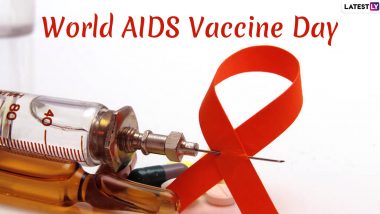Each year, World AIDS Vaccine Day or HIV Vaccine Awareness Day is observed on May 18th to push the urgent need for vaccines to prevent the spread of this insidious disease. This day we acknowledge the health care workers, scientists and volunteers who work tirelessly in pursuit to find a safe HIV vaccine. HIV Vaccine Awareness Day also calls for investment in sophisticated technologies from the international community. While it is absolutely imperative to acknowledge the efforts of health professionals and appeal for better preventative measures, it is equally crucial and as an extension beneficial to learn more about this disease, so one can pre-empt its attack. So on this HIV Vaccine Awareness Day, let's learn more about Aids, the causes and preventative measures.
What is AIDS?
Acquired immunodeficiency syndrome (AIDS) is a deadly disease that attacks the immune system and prevents your body from fighting any infection or disease. AIDS is caused by the human immunodeficiency virus (HIV), which is a sexually transmitted infection. AIDS doesn't show up overnight. A person infected with HIV and not under medication can gradually develop AIDS. HIV, untreated, can lay dormant for years and then unleash a full-blown attack on the immune system that will morph into AIDS. HIV is spread by blood transfusions from a person already infected with HIV. HIV can also be spread through Pregnancy or breastfeeding the child if the mother hasn't been on medication. Sharing needles and syringes can also cause HIV. This exposes them to droplets of other people's blood.
Symptoms of HIV
There are three phases of HIV. The first phase is Primary infection (Acute HIV). People at this stage develop flu-like symptoms within two to four weeks after the virus enters the body. The symptoms at this stage are quite difficult to diagnose as they mimic symptoms of flu. This virus spreads quickly as the amount of virus in your bloodstream is quite high. This may last for weeks.
The second phase is Clinical latent infection (Chronic HIV). The symptoms are similar to the first phase. During this phase, the virus is still present in your bloodstream and if left to its own devices without any antiretroviral therapy (ART) it can persist for years.
The third phase Symptomatic HIV infection can prove to be quite deadly. In this phase, a person who has not sought any treatment for HIV will develop infections as the virus continues to multiply and destroy your immune cells. If left untreated they will develop AIDS. HIV typically turns into AIDS in about 8 to 10 years.
Can AIDS be cured?
As of now, there is no cookie-cutter solution to cure AIDS. While there is medication to manage the symptoms there are no vaccines to completely erase this life-threatening disease. HIV is an insidious virus that is prone to rapid mutation. As a result, it is quite difficult for a human immune system to detect the virus and produce antibodies that are strong enough to combat the disease. The vaccine is not enabled to prevent a virus that is rapidly changing its form. It can only attack it in one particular form. So a vaccine proves futile.
How can it be prevented?
There's no vaccine to prevent HIV or AIDS. But you can protect yourself and others from infection by having safe sex, taking medication and using a clean needle. If already infected with HIV, taking antiviral medication can keep your partner from becoming infected with the virus. Getting regular checkups and vigilance is imperative to ward off AIDS. If you're pregnant the baby might also be infected by HIV. So getting medical help can help minimise the infection to the infant.
(The above story first appeared on LatestLY on May 18, 2021 11:34 AM IST. For more news and updates on politics, world, sports, entertainment and lifestyle, log on to our website latestly.com).













 Quickly
Quickly




















